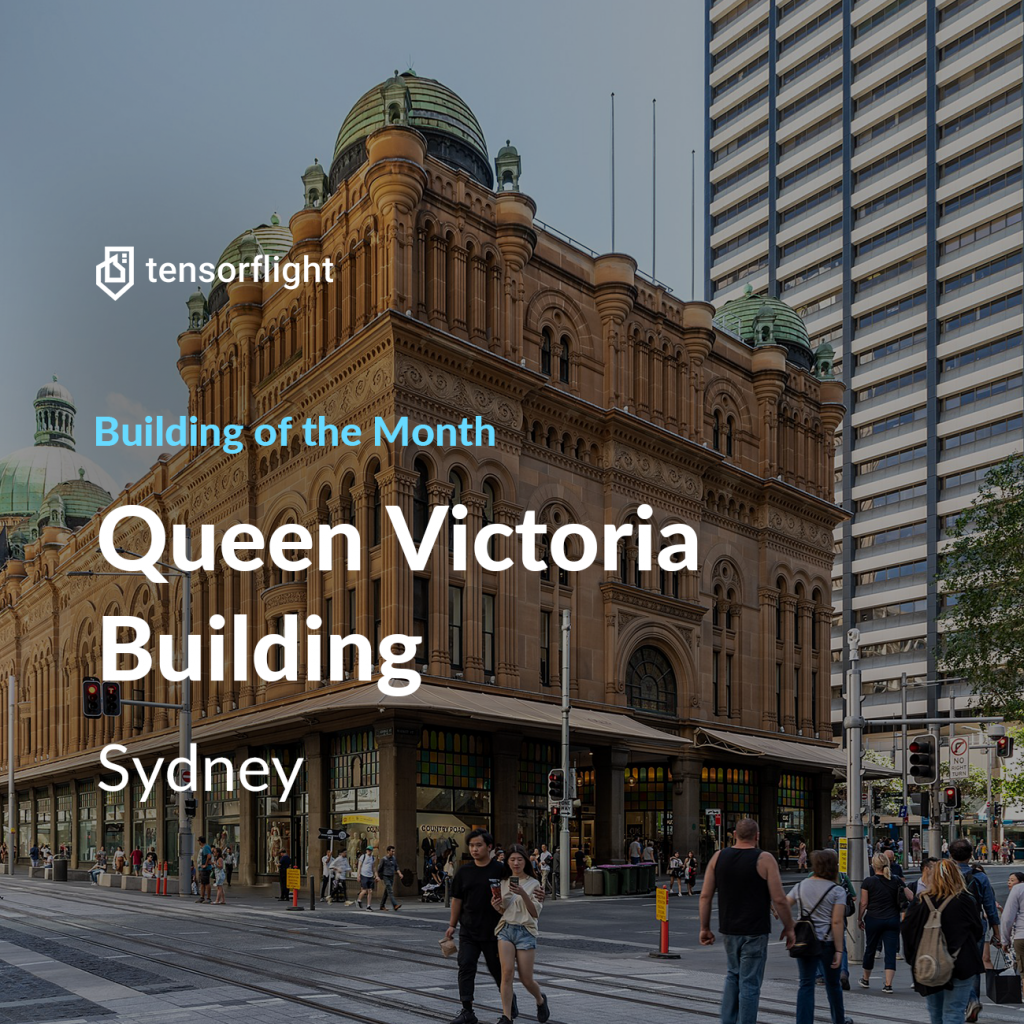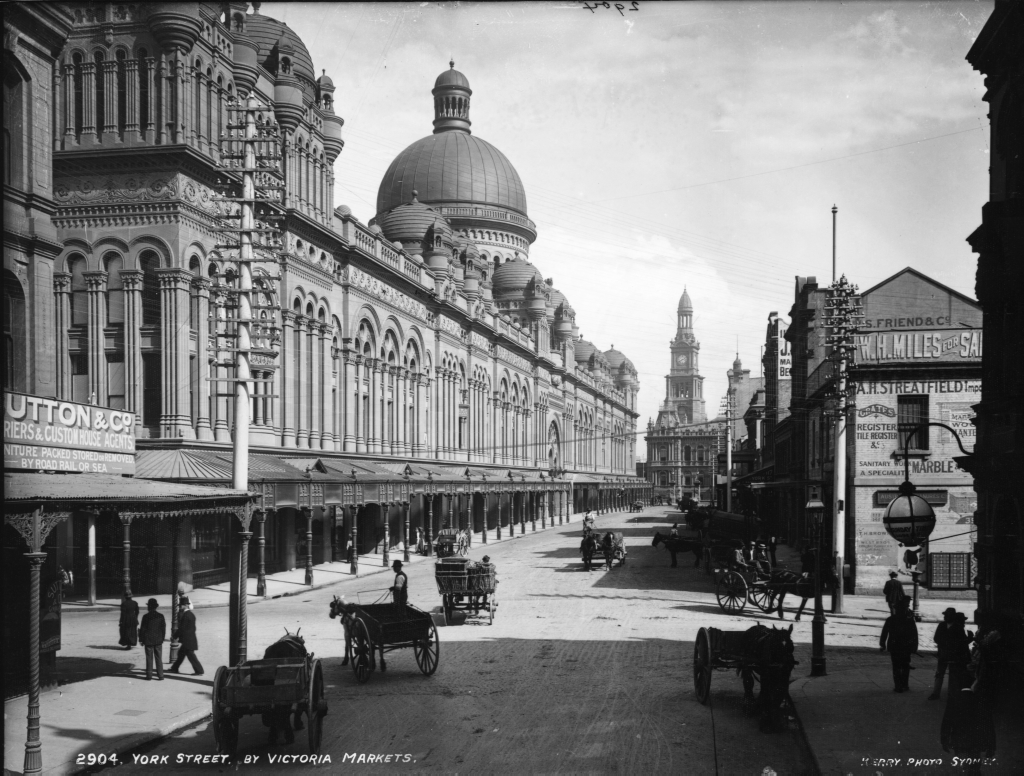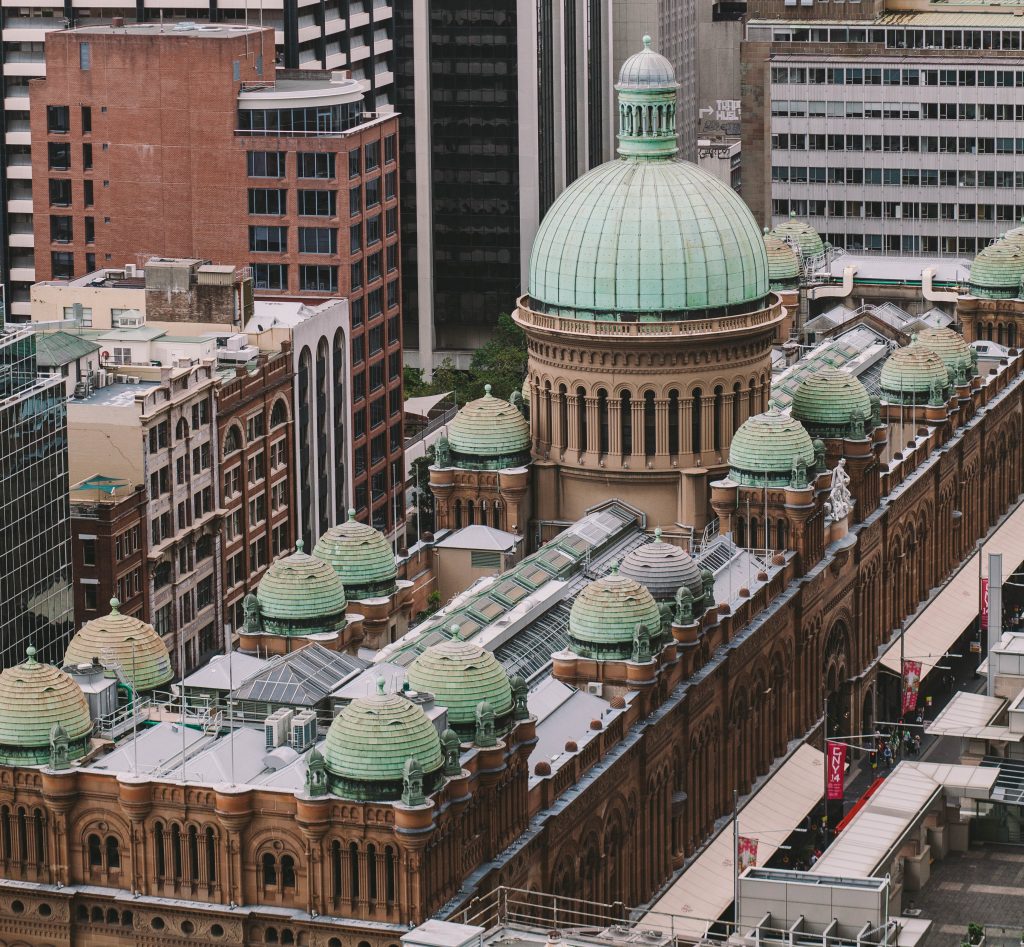A tangible testament to the city’s rich history and commitment to innovative architectural practices. Nestled in the vibrant heart of Sydney, the Queen Victoria Building. Today, we dive into the detailed analysis of this impressive structure to understand its architectural nuances and showcase how advanced technologies can aid in assessing complex buildings for insurance companies from the Australian Market.

History, construction, and renovations
The construction of the Queen Victoria Building began in 1893 and came to completion in 1898 at a cost of £374,000. The opening was marked by Matthew Harris – the Mayor’s presence on 21st July 1898, with the building undergoing significant renovations throughout its lifetime to adapt to the city’s evolving needs.
- Celebrating its first major renovation in June 1917, the building underwent major internal alterations – encompassing floor enclosures, the reduction of void sizes, and the reconstruction of vertical transport systems. This transformation increased the lettable floor space substantially.
- Between 1933 and 1935, QVB transformed into a local government office space with shops along the external street frontages. Exploration of different architectural styles led to the removal of most internal decorative elements and the addition of an Art Deco façade facing George Street.
- The period from 1982-1986 brought a major turnaround. The building underwent a substantial conservation and refurbishment, after which it was returned to its main function — a retail complex. A profit-sharing lease agreement in 1983 between the Lord Mayor and a Malaysian company IPOH Garden was a significant highlight, turning their development scheme worth $89M into a reality.
- Lastly, between 2006-2009, QVB experienced another facelift — internal conservation of facades and refurbishment, including a fresh color scheme, new escalators, lighting schemes, and shop fronts — all within a budget of AUD 48 million.

Architectural modesty, modern Sydney
The building consists of a basement, ground, and two main upper floors, along with additional levels in the end pavilions. The spirituous architect McRae intelligently used construction methods and materials such as brickwork, iron, steel, concrete, reinforcing, machine-made bricks, glass, imported tiles, fire-proofing, riveting, and hydraulics to derive an avant-garde edifice.
Exhibiting a gross lettable area of 14,199 sqm, the building today houses 158 tenants and caters to a total trade area population (TTA) of 2,642,447. Its roof is a steel structure coated with concrete and fiberglass domes, painted to imitate concrete. Furthermore, its facades exhibit a Sydney sandstone-clad aesthetic complementing the brick and concrete walls.

One tool for the entire portfolio
Appreciating the architectural brilliance that the Queen Victoria Building brings is only made comprehensive when paired with analysis. Tensorflight specializes in providing detailed and accurate data around architectural structures, serving the property underwriting process across all levels.
Our expanded global coverage capacity makes sure that we can provide you with crucial insights regardless of geographical barriers. This impacts risk management strategies, encouraging innovation; adopting intelligent solutions, and enhancing the efficiency and effectiveness of the ever-evolving property insurance ecosystem.
In the world of insurance, getting the complete picture is crucial, and that’s where we are different. High data return and pinpoint accuracy while preserving flexibility, and adjustability, with a global coverage. Tensorflight’s solution uses automated computer vision techniques to provide the building analysis; providing over 20 reliable essential parameters like the building’s footprint, which for the Queen Victoria Building is 59,446 sq ft².
Understanding the changing landscape
Transitioning from history to the present, the story of the Queen Victoria Building gives us a clear picture of how important it is to understand a building’s past and structure, but also where the entire insurance industry is going. This becomes more significant, especially in insurance, where the details of a structure play a key role in managing risks, and everything runs on data. That’s why at Tensorflight, we developed one solution designed to delve into these details for properties all around the globe, offering precise and reliable data about different structures.
With our solution, you can streamline the underwriting process and improve risk management tactics. No matter what type of building you’re dealing with – commercial, or residential – our technology is an asset for anyone needing comprehensive information about a property.
Contact us at contact@tensorflight.com to explore more about Tensorflight’s solution and how it can transform your property insurance business.

